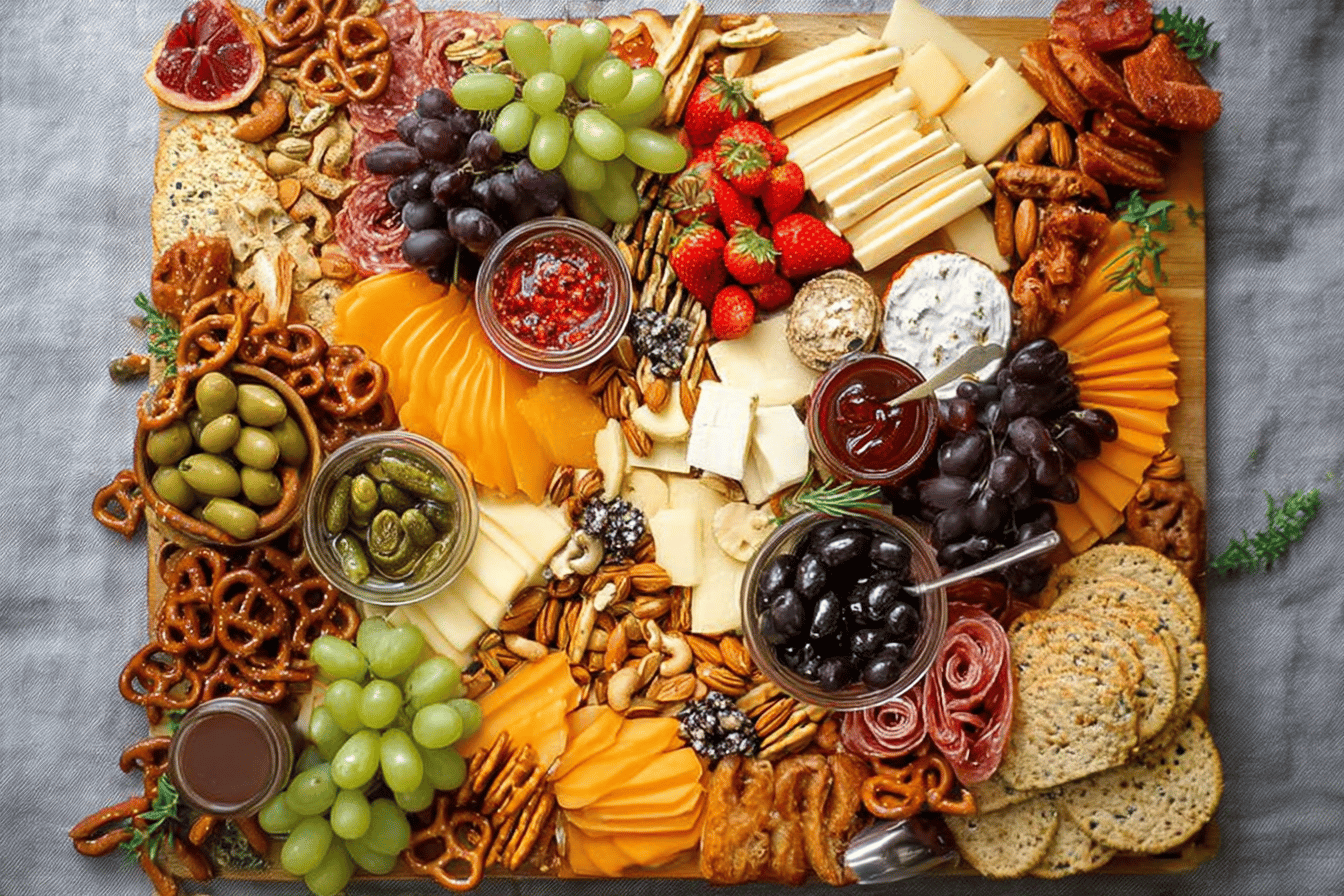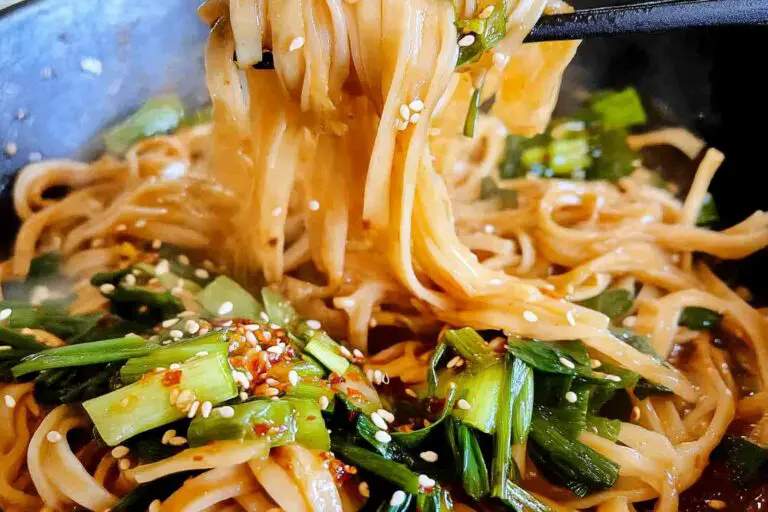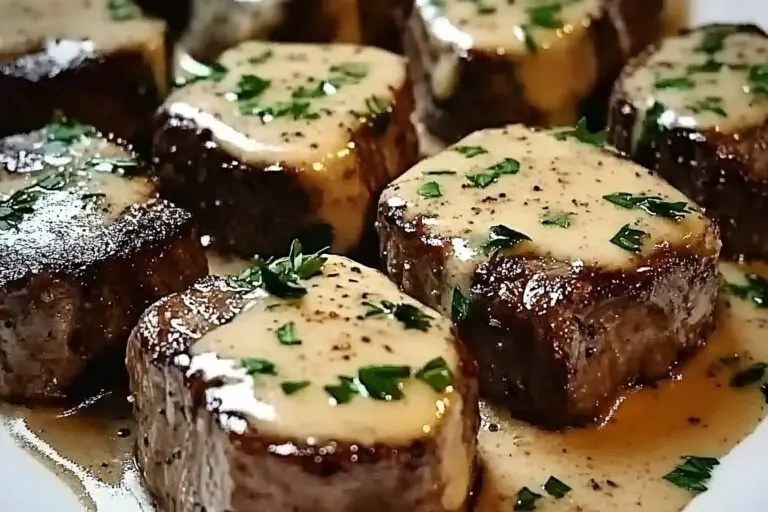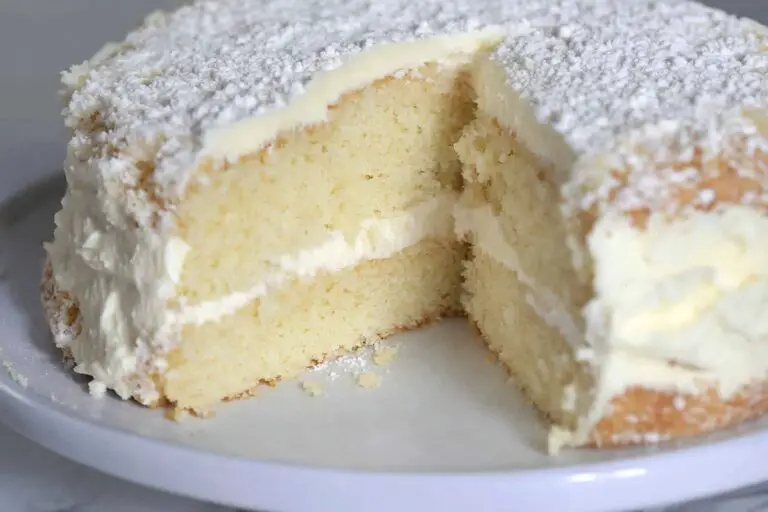Perfect Vegan Charcuterie Board
Introduction
Discovering the Art of Vegan Charcuterie
A vegan charcuterie board is more than just an arrangement of snacks; it’s a work of art. As plant-based diets continue gaining popularity, the vegan charcuterie board offers a chance to showcase creativity, flavors, and textures in one stunning platter. This guide will walk you through how to create the perfect vegan charcuterie board that is delicious, visually appealing, and sure to impress your guests.
Detailed Ingredients with measures
What You’ll Need to Build Your Board
– Dairy-free cheeses of your choice (soft, spreadable, or aged varieties)
– Fresh fruits such as grapes, sliced pears, or apple wedges
– Dried fruits like apricots and figs
– Crunchy vegetables such as cucumber slices, baby carrots, or cherry tomatoes
– Vegan-friendly crackers or bread slices
– Mixed nuts like almonds, walnuts, or cashews
– Plant-based dips or spreads, such as hummus or a vegan pesto
– Optional extras for garnishing: fresh herbs, edible flowers, or dark chocolate pieces
Prep Time
Putting It All Together
Preparation is simple yet key to making your vegan charcuterie board successful. Start by washing and slicing your fruits and vegetables to ensure everything is fresh and ready to serve. Consider the layout of your board—placing different textures and colors strategically can elevate the presentation.
Cook Time, Total Time, Yield
Quick Assembly with Big Results
Thankfully, no actual cooking is required. This vegan treat can be prepped in as little as 15 to 20 minutes, making it ideal for last-minute gatherings or as an appetizer for any occasion. It yields one beautifully full charcuterie board that can serve up to 6 people.
Mastering the Charcuterie Creativity
With proper planning and delicious components, your vegan charcuterie board is guaranteed to steal the spotlight. The combination of vibrant ingredients and tantalizing flavors ensures a celebration of plant-based delights all your guests will love. Whether for a party, a cozy evening, or just because—celebrate the art of snacking in style.
Detailed Directions and Instructions
Step 1: Choose Your Board
Select a wooden, slate, or marble board that’s flat and large enough to assemble all of your ingredients. If you don’t have a charcuterie board, use a large platter or a sheet pan instead.
Step 2: Select Your Bowls
Choose a couple of small bowls for items like dips, spreads, or tiny ingredients that might roll around easily. Make sure the size fits well on your board without overcrowding.
Step 3: Place Your Bowls First
Position the small bowls on the board as anchor points. Spread them out evenly across the board to create balance.
Step 4: Add Vegan Cheeses
Place your vegan cheeses onto the board. Pre-slice harder cheeses to make it easier for guests to serve themselves. Arrange them in different corners or spaces to offer variety across the board.
Step 5: Add Vegan Meats
Lay out your plant-based meats next. Fold or roll larger slices and fan them out for visual appeal. Smaller pieces can be grouped together neatly near complementary items.
Step 6: Add Crackers and Bread
Arrange crackers and bread sticks around the cheeses and meats. Use different sizes, shapes, and textures to add dimension.
Step 7: Add Fresh Fruit
Place fresh fruits like grapes, berries, or sliced apples. Use a mix of colors to add vibrancy. Keep smaller fruits near bowls or grouped together to avoid spilling across the board.
Step 8: Add Fresh Vegetables
Incorporate fresh vegetables such as cherry tomatoes, cucumber slices, or baby carrots. Spread them out evenly but in groups for a neat presentation.
Step 9: Add Extras
Fill in gaps with extras like nuts, dried fruit, olives, or pickles. Use these items to fill smaller spaces and to create harmony in the arrangement.
Step 10: Garnish Your Board
Garnish your board with fresh herbs like rosemary, thyme, or basil for a pop of green and a fragrant touch.
Step 11: Final Touches
Double-check your board for empty spaces or overcrowded spots. Adjust items as needed. Clean up any spills or crumbs before presenting.
Notes
Note on Cheese Selections
Choose a variety of textures and flavors when selecting vegan cheeses, such as soft spreads, smoky options, or aged ones, to cater to different tastes.
Note on Dietary Restrictions
Keep in mind any dietary restrictions or allergies your guests may have, like gluten-free crackers, nut-free dips, or meat substitutes.
Note on Seasonal Ingredients
Incorporate seasonal fruits and vegetables for the freshest options and to keep costs lower.
Note on Presentation
Play with different colors, textures, and heights for a visually appealing board. Use symmetry and varying shapes for balance.
Note on Leftovers
Store any leftovers in airtight containers in the fridge to maintain freshness. Some items, like crackers, may need to be stored separately to avoid sogginess.
Note on Preparation Time
Prepare and assemble the board as close to serving time as possible to ensure ingredients remain fresh.
Cook Techniques
Select a Variety of Ingredients
When making a vegan charcuterie board, be sure to include a variety of textures and flavors, such as plant-based cheeses, fruits, vegetables, nuts, crackers, and spreads. This will ensure a balanced mix for guests to enjoy.
Focus on Aesthetics
Presentation is key to creating the perfect charcuterie board. Arrange ingredients in small clusters, paying attention to colors and shapes to create an appealing layout.
Slice and Prep in Advance
Slice cheeses, chop vegetables, and prepare fruits beforehand. This makes the board easier for guests to eat and gives everything a polished appearance.
Use Small Bowls for Spreads
Place dips, hummus, or jams in small bowls to add height to the platter and keep things organized. Scatter these bowls evenly across the board.
Layer and Fill Gaps
Layer ingredients and use smaller nuts or garnishes, like fresh herbs, to fill in any empty spaces for a full-looking presentation.
Incorporate Seasonal Options
Use seasonal fruits and vegetables to bring freshness and budget-friendly items to your board.
FAQ
Can I make a vegan charcuterie board ahead of time?
Yes, you can prep most of the items a few hours in advance. Cover the board with plastic wrap and store it in the refrigerator until ready to serve.
What plant-based cheeses should I include?
Choose a mix of soft, creamy cheeses, like cashew-based spreads, and slices or chunks of firmer cheeses made from nuts or soy.
How do I balance sweet and savory flavors?
Incorporate items like crackers, pickled vegetables, olives, and plant-based meats for savory options, while including dried fruits, fresh berries, or dark chocolate for sweetness.
What crackers and bread are vegan-friendly?
Most plain crackers, sourdough bread, and baguettes are naturally vegan. Check labels to ensure no dairy or animal-derived products are included.
How do I create variety while keeping it affordable?
Choose a few premium items, like a good-quality vegan cheese, but balance it with budget-friendly staples like seasonal fruits, raw vegetables, and basic crackers.
What spreads work well on a vegan board?
Try hummus, guacamole, fruit preserves, baba ganoush, or spicy mustards for spreads that pair wonderfully with crackers and veggies.
Can I include cooked elements in my charcuterie board?
Yes, consider roasted vegetables, marinated tofu, or roasted nuts for added flavor and texture.
What decorations can I add to make the board more appealing?
Use fresh herbs like rosemary, edible flowers, or small decorative elements to enhance the visual appeal of the board.
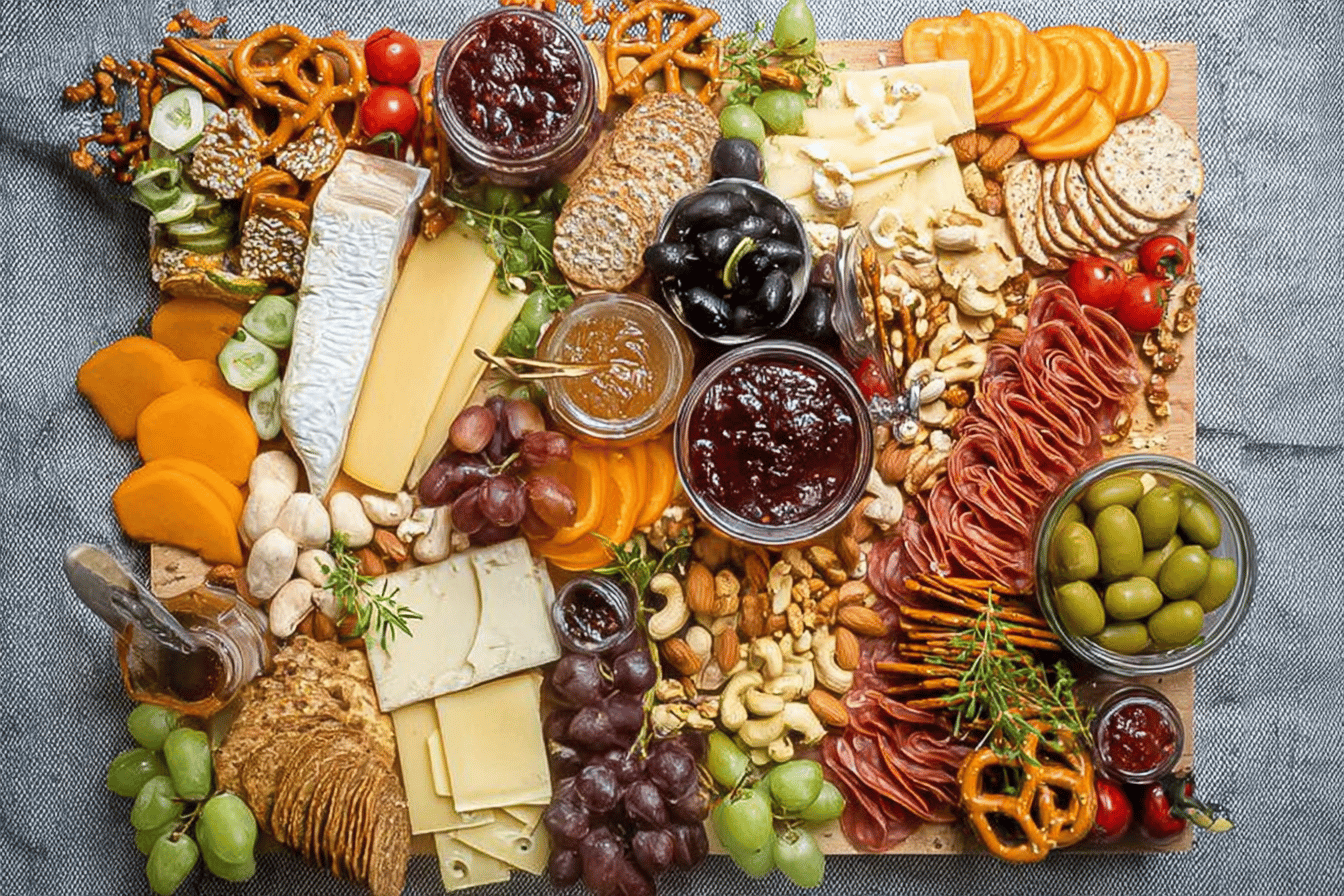
Conclusion
Creating the perfect vegan charcuterie board is all about balance, creativity, and personalization. By using a variety of textures, flavors, and colors, you can craft a beautiful and delicious spread that will wow your guests. With the right selections and some thoughtful pairing, your board will cater to every palate while remaining entirely plant-based. Remember, the key is to make it inviting and fun.
More recipes suggestions and combination
Unique Nut Butter Pairings
Add a selection of nut butters like almond, cashew, or even sunflower butter alongside fruit slices or crackers for a creamy, rich addition.
Sweet Options with Vegan Chocolate
Incorporate vegan chocolate pieces or dips for a pleasant contrast to savory components, perfect for satisfying those with a sweet tooth.
Fresh Fruit Variety
Include a mix of seasonal fresh fruits like berries, grapes, and sliced apples to add natural sweetness and vibrant colors.
Pretzels and Crunchy Snacks
Add an assortment of vegan-friendly crunchy snacks, such as pretzels, popcorn, or pita chips, for texture enthusiasts.
Pickled Vegetables
Include pickled vegetables like olives, cucumbers, or artichokes to add tanginess and variety.
Hearty Protein Options
Add plant-based proteins such as marinated tofu cubes, tempeh slices, or vegan deli slices for more substance.
Creative Dips and Spreads
Offer a variety of vegan dips and spreads like hummus, guacamole, or a dairy-free cheese spread to complement the crackers and veggies.
Herbs for Garnishing
Fresh herbs like rosemary, thyme, or parsley can be added for aroma, garnish, and a burst of fresh flavor.
Stuffed Dates
Fill dates with nut butter or vegan cream cheese for a quick, sweet, and satisfying addition to your board.

